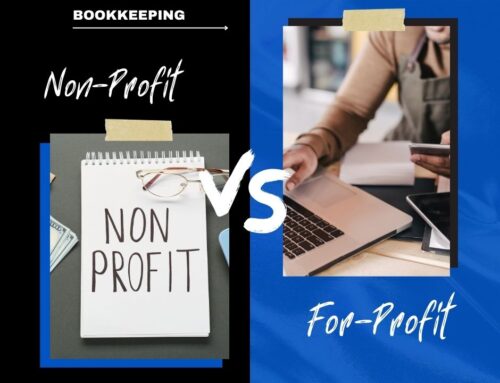If you’re a small business owner, in any stage of development, chances are your focus is on the “must haves” like growing revenue, expanding your client base, and ensuring you offer good service to your existing clients.
Good recordkeeping probably qualifies as a “nice to have,” if only you could find the time. Unfortunately, there are a few occasions where one is forced to find the time – for instance, when tax returns need to be prepared.
To avoid having those occasions feel like crises that require you to turn attention away from your “must haves” for seemingly inordinate amounts of time, consider choosing a deliberate approach to recordkeeping. Whether you’d like to spend a little time up front and a lot in one fell swoop once a year, or you prefer spending a moderate amount of time each month, if you choose the level of attention that you’re prepared to give now versus later, you know what you’ve signed up for. By doing so, you can avoid being surprised by stresses and hassles associated with finding what you need when you need it.
If you have hired a professional administrator to address your recordkeeping, among other outsource-able tasks such as accounting, congratulations. When the time comes to file taxes, analyze your business’ profitability, or report to partners or investors, you’ve got the infrastructure in place and probably a good amount of the legwork, if not all of it, already done.
If you’re tackling record keeping on your own, here’s a primer on what to keep and how to set it up.
The Minimums
The first order of business is to have any of your entity formation documents, licenses, certificates, employer identification number and other official documentation (for instance, payroll related documentation) filed and accessible. Also have your tax returns from recent years accessible.
When it comes to transaction-based records – most typically these relate to business income and expenses – consider keeping all these records grouped by month, with one hanging folder for every month. Each folder may not be overly organized, but at least you’ll know that all the records are present, with nothing missing. Include printed bank statements and credit card statements, and any correspondence that concerns the running of your business. When the time comes to compile the information, it may require some brain power and computing power to put together a financial history from these records, but all the data will be at hand.
At this level of recordkeeping, you might be mainly referencing your bank statements in print or online (and other statements, such as those of credit cards) to determine what your financial situation is at any given time. At tax time, you may hand all of these files over to your tax preparer, with perhaps a first stop with another accounting professional to compile all the data so that it’s in the most ready-to-use form for your tax preparer.
What you’ve gained: It tends to be the hunting and gathering that people find most unpleasant and time consuming; you’ve got that covered.
Gold Star
At this level, you’ve made it a habit to routinely process transactions in an accounting system such as QuickBooks, perhaps daily, perhaps weekly, but no less frequently than monthly. Your filing is more likely now to include alphabetical files, one per vendor, and your stack of items to be filed is reasonably short. Hardcopies of bank statements have been reconciled, so you know that your accounting system accurately reflects the state of your finances. All transactions in the bank statement (and other statements, such as those of credit cards used for business) are verified to have been recorded in your accounting system, and those transactions in your accounting system that have not yet cleared through the bank are identified and deemed to be current pending transactions. All transactions are properly recorded in your accounting system, item by item, and classified in an appropriate account.
At this level, you can reference either your bank statements and other business related statements to assess your financial situation, but more likely you’re printing out reports from an accounting system on a routine basis, and you’re in a position to review relevant analytics such as how one business line is performing compared to another, or how your business is performing so far this year compared to the same period in the prior year.
What you’ve gained: When it comes to producing reports for managing and analyzing your business or for tax preparation, the records are so up to date that all it takes is a few clicks of the mouse.
A Middle Ground
Most of us find ourselves operating somewhere between covering the minimums and maintaining records at a best-practices level. This middle ground involves working with your transaction-based records on an occasional basis, maybe doing a little backlogged filing, then catching up with bank reconciliations on perhaps a quarterly basis or at the half-year.
Getting caught up takes a concerted effort and a fair chunk of time, but if the minimum records have been kept, you’ve saved yourself the dreaded hunting and gathering step. As a result of the catch-up effort, you may now have the opportunity to better manage your business by performing analytics to help you identify positive or negative trends and proactively adjust the focus of your business to optimize how you’re allocating your resources, including your own time.
What you’ve gained: By catching up on record-keeping in periodic bursts, you get a leg up on the work that needs to be done in advance of tax time, and you are likely to be in a position to perform some analytics to assist in managing your business.





